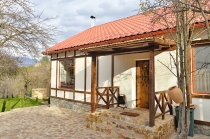
Marriott Tsaghkadzor
The hotel complex "Marriott Tsaghkadzor" offers a comfortable stay in the fresh air of Tsaghkadzor,...
Golden Palace Resort
"Golden Palace Resort-Spa" is the only officially recognized 5-star hotel in Tsakhkadzor, in...
Elegant
Elegant" hotel has stylish rooms where the guests can enjoy picturesque view of mountains and...
Villa Jrhogher
"Villa Jrhogher" is situated in the heart of Dilijan’s forests and is a perfect choice for a small group of friends, colleagues or family members to host up to 10 guests. Free private parking...
Indonesia
| Capital | Jakarta |
| Area | 1 919 440 km² |
| Population | 237 556 000 people |
| Official language | Indonesian |
| Currency | Indonesian Rupiah |
| Climate | from May to October to +31°C the water temperature all year around +27°C |
| Recommended type of holiday | sightseeing (Java Island) |
About country
Indonesia’s cities are in a constant state of urban evolution, where dense populations, technology and construction live in hectic symbiosis. But most of the archipelago’s territory remains unexplored, concealing a wealth of cultures and a myriad of landscapes. Oceanic rice fields and ancient sultanates in Java are humbled by haunting volcanic cones. Maluku’s alabaster beaches and desert islands remain pristine while the tourist trail heads elsewhere. The jungles of Sumatra, Kalimantan and Papua are zoological wonders, revealing impish monkeys, stoic sun bears, leopards, orang-utans and remarkable marsupials.
And then there are the micromoments, equally exquisite but entirely unexpected; impromptu English lessons with school children, instant friendships in crammed bemos, lending an ear to your becak rider… In Indonesia there is plenty of cause to pause, except when dodging hurtling traffic – but that’s all part of the adventure.
Sightseeing
There is absolutely no dearth of Sightseeing places in Indonesia. Indonesia boasts of having the largest archipelago in the world. Indonesia is also the fifth most populous nation in the world. The five main islands in Indonesia are as follows-
Java, Sumatra, Kalimantan, Sulawesi and Irian Jaya. Indonesia's 190 million inhabitants composed of 300 ethnic groups speak an estimated 583 different languages and dialects. The present Indonesian culture reflects a perfect blend of indigenous customs and a plurality of foreign influences.
The center is an international project partially funded by the World Wildlife Fund. The aim of the center is to train elephants to be useful to mankind. Visitors may ride the elephants. Way Kambas is near Bandar Lampung.
The center is an international project partially funded by the World Wildlife Fund. The aim of the center is to train elephants to be useful to mankind. Visitors may ride the elephants. Way Kambas is near Bandar Lampung.
Traditions
Indonesian culture has been shaped by long interaction between original indigenous customs and multiple foreign influences. Indonesia is central along ancient trading routes between the Far East and the Middle East, resulting in many cultural practices being strongly influenced by a multitude of religions, including Hinduism, Buddhism, Confucianism and Islam, all strong in the major trading cities. The result is a complex cultural mixture very different from the original indigenous cultures.
Examples of cultural fusion include the fusion of Islam with Hindu in Javanese Abangan belief, the fusion of Hinduism, Buddhism and animism in Bodha, and the fusion of Hinduism and animism in Kaharingan; others could be cited.
Indonesian art-forms express this cultural mix. Wayang, traditional theater-performed puppet shows, were a medium in the spread of Hinduism and Islam amongst Javan villagers. Both Javanese and Balinese dances have stories about ancient Buddhist and Hindu kingdoms, while Islamic art forms and architecture are present in Sumatra, especially in the Minangkabau and Aceh regions. Traditional art, music and sport are combined in a martial art form called Pencak Silat.
Cuisine
Indonesian cuisine is diverse, in part because Indonesia is composed of approximately 6,000 populated islands. Many regional cuisines exist, often based upon cultural and foreign influences. Indonesian cuisine varies greatly by region and has many different influences. For example, Sumatran cuisine often has Middle Eastern and Indian influences, featuring curried meat and vegetables, while Javanese cuisine and Sundanese cuisine are more indigenous.
Some popular Indonesian dishes such as nasi goreng, gado-gado, sate, and soto are ubiquitous in the country and considered as Indonesian national dishes.
Copyright © 2008 - 2024 kayq.org by Kayq.org. All rights reserved.



.jpg&width=&height=)


.jpg&width=155&height=120)

.jpg&width=163&height=120)


.jpg&width=198&height=120)
.jpg&width=180&height=120)


.jpg&width=160&height=120)